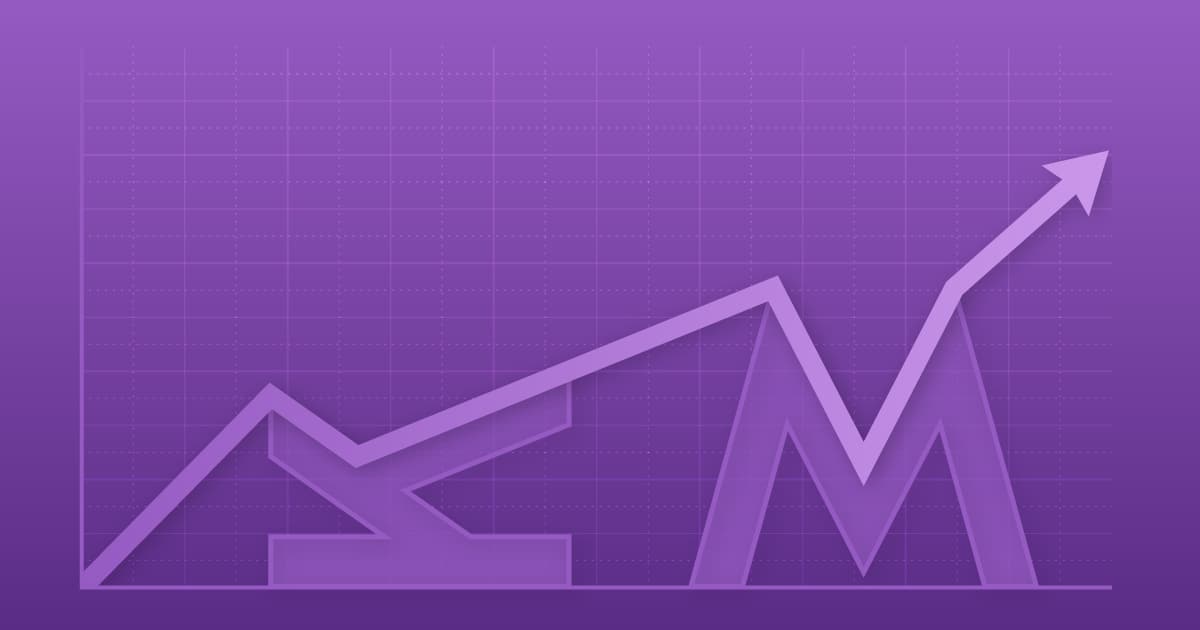As CEO of the world’s largest Knowledge Management consulting company, I am fortunate to possess a unique view of KM trends. For each of the last several years, I’ve written an annual list of these KM trends, and looking back, I’m pleased to have (mostly) been on point, having successfully identified such KM trends as Knowledge Graphs, the confluence of KM and Learning, the increasing focus on KM Return on Investment (ROI), and the use of KM as the foundation for Artificial Intelligence.
Every year in order to develop this list, I engage EK’s KM consultants and thought leaders to help me identify what trends merit inclusion. We consider factors including themes in requests for proposals and requests for information; the strategic plans and budgets of global organizations; priorities for KM transformations; internal organizational surveys; interviews with KM practitioners, organizational executives, and business stakeholders; themes from the world’s KM conferences and publications, interviews with fellow KM consultancies and KM software leaders; and the product roadmaps for leading KM technology vendors.
The following are the seven KM trends for 2023:
 KM at a Crossroads – The last several years have seen a great deal of attention and funding for KM initiatives. Both the pandemic and great resignation caused executives to realize their historical lack of focus on KM resulted in knowledge loss, unhappy employees, and an inability to efficiently upskill new hires. At the same time, knowledge graphs matured to the point where KM systems could offer further customization and ability to integrate multiple types of content from disparate systems more easily.
KM at a Crossroads – The last several years have seen a great deal of attention and funding for KM initiatives. Both the pandemic and great resignation caused executives to realize their historical lack of focus on KM resulted in knowledge loss, unhappy employees, and an inability to efficiently upskill new hires. At the same time, knowledge graphs matured to the point where KM systems could offer further customization and ability to integrate multiple types of content from disparate systems more easily.
In 2023, much of the world is bracing for a recession, with the United States and Europe likely to experience a major hit. Large organizations have been preparing for this already, with many proactively reducing their workforce and cutting costs. Historically, organizations have drastically reduced KM programs, or even cut them out entirely, during times of economic stress. In 2008-2009, for instance, organizational KM spending was gutted, and many in-house KM practitioners were laid off.
I anticipate many organizations will do the same this year, but far fewer than in past recessions. The organizations that learned their lessons from the pandemic and staffing shortages will continue to invest in KM, recognizing the critical business value offered. KM programs are much more visible and business critical than they were a decade ago, thanks to maturation in KM practices and technologies. Knowledge Management programs can deliver business resiliency and competitive advantage, ensure that knowledge is retained in the organization, and enable employee and customer satisfaction and resulting retention. The executives that recognize this will continue their investments in KM, perhaps scaled down or more tightly managed, but continued nonetheless.
Less mature organizations, on the other hand, will repeat the same mistakes of the past, cutting KM, and with it, walking knowledge out the door, stifling innovation, and compounding retention issues, all for minimal and short-term savings. This KM trend, put simply, will be the divergence between organizations that compound their existing issues by cutting KM programs and those that keep calm and KM on.
 Focus on Business Value and ROI – Keying off the previous trend, and revisiting a trend I’ve identified in past years, 2023 will bring a major need to quantify the value of KM. In growth years when economies are booming, we’ve typically seen a greater willingness for organizations to invest in KM efforts. This year, there will be a strong demand to prove the business value of KM.
Focus on Business Value and ROI – Keying off the previous trend, and revisiting a trend I’ve identified in past years, 2023 will bring a major need to quantify the value of KM. In growth years when economies are booming, we’ve typically seen a greater willingness for organizations to invest in KM efforts. This year, there will be a strong demand to prove the business value of KM.
For KM practitioners, this means being able to measure business outcomes instead of just KM outcomes. Examples of KM outcomes are improved findability and discoverability of content, increased use and reuse of information, decreased knowledge loss, and improved organizational awareness and alignment. All of these things are valuable, as no CEO would say they don’t want them for their organization, and yet none of them are easily quantifiable and measurable in terms of ROI. Business outcomes, on the other hand, can be tied to meaningful and measurable savings, decreased costs, or improved revenues. Business outcomes resulting from KM transformations can include decreased storage and software license costs, improved employee and customer retention, faster and more effective employee upskilling, and improved sales and delivery. The KM programs that communicate value in terms of these and other business outcomes will be those that thrive this year.
This KM trend is a good one for the industry, as it will require that we put the benefits to the organization and end users at the center of any decision.
 Knowledge Portals – Much to the surprise, if not disbelief, of many last year, I predicted that portals would make a comeback from their heyday in the early 2000’s. The past year validated this prediction, with more organizations making multi-year and multi-million dollar investments in KM transformations with a Knowledge Portal (or KM Portal) at the center of the effort. As I wrote about recently, both the critical awareness of KM practices as well as the technology necessary to make a Knowledge Portal work have come a long way in the last twenty years. Steered further by the aforementioned drivers of remote work and the great resignation, organizations are now implementing Knowledge Portals at the enterprise level.
Knowledge Portals – Much to the surprise, if not disbelief, of many last year, I predicted that portals would make a comeback from their heyday in the early 2000’s. The past year validated this prediction, with more organizations making multi-year and multi-million dollar investments in KM transformations with a Knowledge Portal (or KM Portal) at the center of the effort. As I wrote about recently, both the critical awareness of KM practices as well as the technology necessary to make a Knowledge Portal work have come a long way in the last twenty years. Steered further by the aforementioned drivers of remote work and the great resignation, organizations are now implementing Knowledge Portals at the enterprise level.
The use cases for Knowledge Portals vary, with some treating the system as an intranet or knowledge base, others using it as a hub for learning or sales, and still others using it more for tacit knowledge capture and collaboration. Regardless of the use cases, what makes these Knowledge Portals really work is the usage of Knowledge Graphs. Knowledge Graphs can link information assets from multiple applications and display them on a single screen without complicated and inflexible interface development. CIOs now have a way to do context-driven integration, and business units can now see all of the key information about their most critical assets in a single location. What this means is that Knowledge Portals can now solve the problem of application information silos, enabling an organization to collectively understand everything its people need to know about its most important knowledge assets.
 Context-Driven KM – We’ve all heard the phrase, “Content is King,” but in today’s KM systems, Context is the new reigning monarch. The new trend in advanced knowledge systems is for them to be built not just around information architecture and content quality, but around knowledge graphs that provide a knowledge map of the organization. A business model and knowledge map expressed as an ontology delivers a flexible, expandable means of relating all of an organization’s knowledge assets, in context, and revealing them to users in a highly intuitive, customized manner. Put simply, this means that any given user can find what they’re looking for and discover that which they didn’t even know existed in ways that feel natural. Our own minds work in the same way as this technology, relating different memories, experiences, and thoughts. A system that can deliver on this same approach means an organization can finally harness the full breadth of information they possess across all of their locations, systems, and people for the purposes of collaboration, learning, efficiency, and discovery. Essentially, it’s what everyone has always wanted out of their information systems, and now it’s a reality.
Context-Driven KM – We’ve all heard the phrase, “Content is King,” but in today’s KM systems, Context is the new reigning monarch. The new trend in advanced knowledge systems is for them to be built not just around information architecture and content quality, but around knowledge graphs that provide a knowledge map of the organization. A business model and knowledge map expressed as an ontology delivers a flexible, expandable means of relating all of an organization’s knowledge assets, in context, and revealing them to users in a highly intuitive, customized manner. Put simply, this means that any given user can find what they’re looking for and discover that which they didn’t even know existed in ways that feel natural. Our own minds work in the same way as this technology, relating different memories, experiences, and thoughts. A system that can deliver on this same approach means an organization can finally harness the full breadth of information they possess across all of their locations, systems, and people for the purposes of collaboration, learning, efficiency, and discovery. Essentially, it’s what everyone has always wanted out of their information systems, and now it’s a reality.
 Data Firmly in KM – Historically, most organizations have drawn a hard line between unstructured and structured information, managing them under different groups, in different systems, with different rules and governance structures. As the thinking around KM continues to expand, and KM systems continue to mature, this dichotomy will increasingly be a thing of the past. The most mature organizations today are looking at any piece of information, structured or unstructured, physical or digital, as a knowledge asset that can be connected and contextualized like any other. This includes people and their expertise, products, places, and projects. The broadening spectrum of KM is being driven by knowledge graphs and their expanding use cases, but it also means that topics like data governance, metadata hubs, data fabric, data mesh, data science, and artificial intelligence are entering the KM conversation. In short, the days of arguing that an organization’s data is outside the realm of a KM transformation are over.
Data Firmly in KM – Historically, most organizations have drawn a hard line between unstructured and structured information, managing them under different groups, in different systems, with different rules and governance structures. As the thinking around KM continues to expand, and KM systems continue to mature, this dichotomy will increasingly be a thing of the past. The most mature organizations today are looking at any piece of information, structured or unstructured, physical or digital, as a knowledge asset that can be connected and contextualized like any other. This includes people and their expertise, products, places, and projects. The broadening spectrum of KM is being driven by knowledge graphs and their expanding use cases, but it also means that topics like data governance, metadata hubs, data fabric, data mesh, data science, and artificial intelligence are entering the KM conversation. In short, the days of arguing that an organization’s data is outside the realm of a KM transformation are over.
 Push Over Pull – When considering KM systems and technology, the vast majority of the discussion has centered around findability and discoverability. We’ve often talked about KM systems making it easier for the right people to find the information they need to do their jobs. As KM technologies mature, the way we think about connecting people and the knowledge they need is shifting. Rather than just asking, “How can we enable people to find the right information?”, we can also think more seriously about how we proactively deliver the right information to those people. This concept is not new, but the ability to deliver on it is increasingly real and powerful.
Push Over Pull – When considering KM systems and technology, the vast majority of the discussion has centered around findability and discoverability. We’ve often talked about KM systems making it easier for the right people to find the information they need to do their jobs. As KM technologies mature, the way we think about connecting people and the knowledge they need is shifting. Rather than just asking, “How can we enable people to find the right information?”, we can also think more seriously about how we proactively deliver the right information to those people. This concept is not new, but the ability to deliver on it is increasingly real and powerful.
When we combine an understanding of all of our content in context, with an understanding of our people and analytics to inform us how people are interacting with that content and what content is new or changing, we’re able to begin predictively delivering content to the right people. Sometimes, this is relatively basic, providing the classic “users who looked at this product also looked at…” functionality by matching metadata and/or user types, but increasingly it can leverage graphs and analytics to recognize when a piece of content has changed or a new piece of content of a particular type or topic has been created, triggering a push to the people the system predicts could use that information or may wish to be aware of it. Consider a user who last year leveraged twelve pieces of content to research a report they authored and published. An intelligent system can recognize the author should be notified if one of the twelve pieces of source content has changed, potentially suggesting to the content author they should revisit their report and update it.
Overall, the trend we’re seeing here is about Intelligent Delivery of content and leveraging AI, Machine Learning, and Advanced Content Analytics in order to deliver the right content to individuals based on what we know and can infer about them. We’re seeing this much more as a prioritized goal within organizations but also as a feature software vendors are seeking to include in their products.
 Personalized KM – With all the talk of improved technology, delivery, and context, the last trend is more of a summary of trends. KM, and KM systems, are increasingly customized to the individual being asked to share, create, or find/leverage content. Different users have different missions, with some more consumers of knowledge within an organization and others more creators or suppliers of that knowledge. Advanced KM processes and systems will recognize a user’s responsibility and mandates and will enable them to perform and deliver in the most intuitive and seamless way possible.
Personalized KM – With all the talk of improved technology, delivery, and context, the last trend is more of a summary of trends. KM, and KM systems, are increasingly customized to the individual being asked to share, create, or find/leverage content. Different users have different missions, with some more consumers of knowledge within an organization and others more creators or suppliers of that knowledge. Advanced KM processes and systems will recognize a user’s responsibility and mandates and will enable them to perform and deliver in the most intuitive and seamless way possible.
This trend has a lot to do with content assembly and flexible content delivery. It means that, with the right knowledge about the user, today’s KM solutions can assemble only that information that pertains to the user, removing all of the detritus that surrounds it. For instance, an employee doesn’t need to wade through hundreds of pages of an employee handbook that aren’t pertinent to them; instead, they should receive an automatically generated version specifically for their location, role, and benefits.
The customized KM trend isn’t just about consuming information, however. More powerfully, it is also about driving knowledge sharing behaviors. For example, any good project manager should capture lessons learned at the end of a project, yet we often see organizations fail to get their PMs to do this consistently. A well-designed KM system will recognize an individual as a PM, understand the context of the projects they are managing, and be able to leverage data to know when that project is completed, thereby prompting the user with a specific lessons learned template at the appropriate time to capture that new set of information as content. That is customized KM. It becomes part of the natural work and operations of systems, and it makes it easier for a user to “do the right thing” because the processes and systems are engineered specifically to the roles and responsibilities of the individual.
Another way of thinking about these trends is by invoking the phrase “KM at the Point of Need,” derived from a phrase popularized in the learning space (Learning at the Point of Need). We’re seeing KM head toward delivering highly contextualized experiences and knowledge to the individual user at the time and in the way they need it and want it. What this means is that KM becomes more natural, more simply the way that business is done rather than a conscious or deliberate act of “doing KM.” This is exciting for the field, and it represents true business value and transformation.
Do you need help understanding and harnessing the value of these trends? Contact us to learn more and get started.

